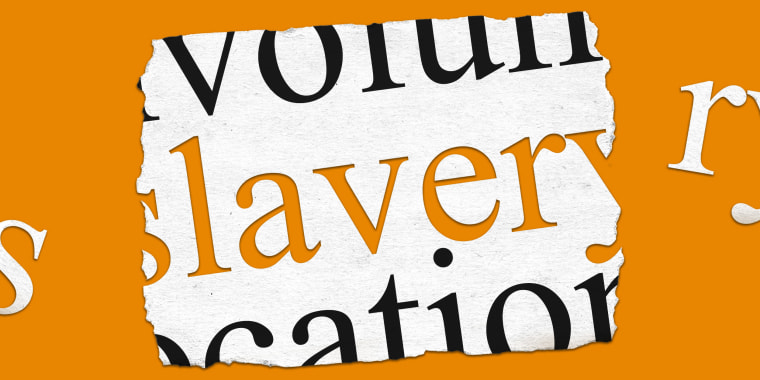In the latest saga of the misguided attacks on “critical race theory,” a group of educators given the assignment of recommending curriculum changes to the Texas State Board of Education proposed that American slavery be described to second grade social studies classes as “involuntary relocation.” If the educators suggesting such phrasing thought they were improving the curriculum, they should know they are doing the opposite. Framing slavery as simply “involuntary relocation” is not only reductionist, but it is also an egregious attempt to whitewash American history that disregards the terror and brutality of slavery.
Framing slavery as simply “involuntary relocation” disregards the terror and brutality of slavery.
The working group made its recommendation months after Texas enacted SB 3, which requires teachers discussing “controversial issues” to "explore that topic objectively and in a manner free from political bias." That same law also says a teacher may not describe “slavery and racism” as “anything other than deviations from, betrayals of, or failures to live up to the authentic founding principles of the United States.” Even so, the working group’s recommendation to call slavery something other than slavery hasn’t been well received. The chair of the state board said in a statement Thursday that the board had “directed the work group to revisit that specific language.”
Slavery in the United States was far more than “involuntary relocation.” As Kidada Williams, associate professor of history at Wayne State University, explained, “Slavery in the most basic terms was an economic and labor system focused on maximizing wealth in the production of cash crops, extraction of natural resources, or use of domestic or urban laborers.” Unlike other forms of unfree labor throughout history, including domestic slavery in west and central Africa and indentured servitude in Europe, slavery in the United States — known as “chattel slavery” — kept Black people and their descendants in bondage for life. For enslavers, the economic gain from chattel slavery constituted a greater priority than the actual well-being of enslaved Black people. As a result, enslaved people had no social, political or economic rights. They were, for example, barred from owning property, acquiring literacy skills and developing any form of independent economic power.
The experience of slavery was brutal — and well documented in the historical record. To maximize wealth, enslavers attempted to strip enslaved people of their humanity and agency. And, as historian Jacqueline Jones explained in “Labor of Love, Labor of Sorrow,” enslavers “extracted as much labor as possible” through unrelenting terror and violence. Although enslaved people actively resisted slavery and devised a range of survival strategies, the violence, pain and trauma of these experiences cannot be overstated.
“Work, work, work” is how Hannah Davidson, a formerly enslaved Black woman who was interviewed as part of the Works Progress Administration's “Slave Narratives” in 1937, described her life of bondage. “I been so exhausted working, I was like an inchworm crawling along a rood. I worked till I thought another lick would kill me.”
Forced relocation was indeed part of enslavement. Not only did slave traders bring captive Africans to the Americas, but enslaved families in the United States could be torn apart in an instant, and it was common for enslaved children to be sold at whim by enslavers — without any regard to the emotional and psychological trauma associated with such separations. Charles Ball recounted the constant fear of being separated from his family in “Narrative of the Life and Adventures of Charles Ball, a Black Man” (1836). These realities were further compounded by the social conditions on the plantation, which motivated Ball to contemplate taking his own life. “What is life worth,” he asked, “amidst hunger, nakedness and excessive toil, under the continually uplifted lash?”
In “Incidents in the Life of a Slave Girl” (1861), Harriet Jacobs, who was sexually harassed by her enslaver, emphatically stated, “Slavery is terrible for men; but it is far more terrible for women.” In addition to physical, economic and social challenges associated with slavery, enslaved women faced additional burdens associated with motherhood, childbirth, sexual exploitation and sexual harassment.
Students — and all Americans, for that matter — need to know exactly what slavery was and what it was not.
Though the law Texas passed last year mandates that slavery be taught as a deviation from America’s founding, UCLA scholar Kyle T. Mays emphasized in “An Afro-Indigenous History of the United States” that “the foundations of the United States, its current power and wealth, were built on enslaved African labor and the expropriation of Indigenous land.” These realities cannot be sugarcoated.
Students — and all Americans, for that matter — need to know exactly what slavery was and what it was not. Second graders deserve to know the truth about the nature of slavery, and hiding this truth only causes further harm. Relegating a violent, exploitative and dehumanizing practice to “involuntary relocation” may appease those who value feelings over facts. But it egregiously distorts the historical record.


